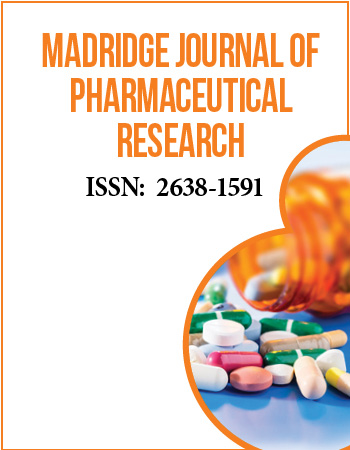International Conference on Medicinal and Pharmaceutical Chemistry
December 5-7, 2016 | Dubai, UAE
Monoamine oxidase inhibition in multi-target drugs
University of St Andrews, Biomedical Sciences Research Complex, United Kingdom
Neurodegenerative diseases have multiple and often common mechanisms in their aetiologies. These multifactorial aspects have driven the search for multi-target drugs for use in therapy. Inhibition of monoamine oxidase (MAO) in the brain is a well-established way to increase neurotransmitter levels, so is a commonly desired target for multi-target designed ligands (MTDL). Screening for MAO inhibition is not straightforward, so some of the interesting physiological and chemical features of these enzymes will be discussed, along with the different roles, locations, and kinetic properties of MAO A and MAO B. Examples of recent multi-target compounds designed to combat Alzheimerʼs Disease will be given.
In addition to slowing the breakdown of the neurotransmitters, MAO inhibitors (MAOI) and decrease oxidative stress by stopping the production of its second product, H2O2, that causes oxidative damage to mitochondria. Mitochondria are vital to healthy neurons to produce sufficient ATP to support the cycles of neurotransmitter release and reuptake, as well as to maintain a healthy cell. Multi-target compounds for Alzheimerʼs disease treatment that inhibit both cholinesterases (for cognitive function) and monoamine oxidases (a proven anti-depressant strategy), can also act as antioxidants to protect mitochondrial function. New compounds were assessed against the individual targets and on cell survival and mitochondrial function in the cell. Some MAOI were assessed in a cellular model of neurodegeneration, namely in fully differentiated SH-SY5Y neurons were treated with homocysteic acid (HCA), an analogue of the neurotransmitter glutamate shown to induce neurodegenerative pathology. Cell viability was decreased by HCA but rescued by the MAOI. HCA treatment significantly decreased the proportion of normal mitochondria and increased the proportion of rounded and interconnected mitochondria, but MAOI gave some protection, decreasing the proportion of rounded mitochondria. These effects indicate that the mechanism of MAOI in the treatment of neurodegeneration is not just to spare the neurotransmitters.
Biography:
Rona R. Ramsay studied at the Universities of Edinburgh and Cambridge, held a Beit fellowship in Cambridge, and progressed to the full research professor level the University of California San Francisco before moving to her current position at the University of StAndrews in 1995. After discovering the mitochondrial carnitine carrier, her research has focused on mitochondrial enzymes, applying techniques of kinetic analysis, inhibitor studies, protein chemistry, and molecular biology to investigate how enzymes work and how they are regulated. Research areas include fatty acid metabolism, flavoenzymes and redox carriers, the mechanism of MPTP toxicity to mitochondria, and drug design formonoamine oxidases (current). Current collaborations across Europe aim to design multifunctional anti-neurodegenerative drugs.


